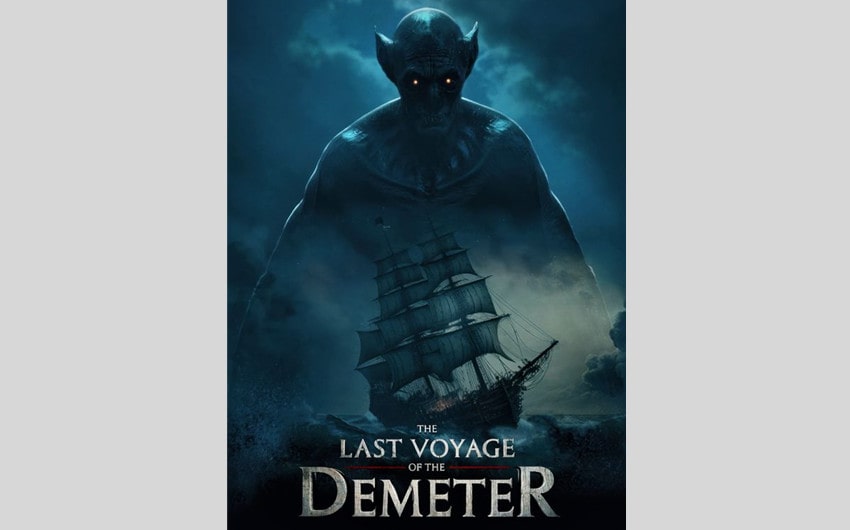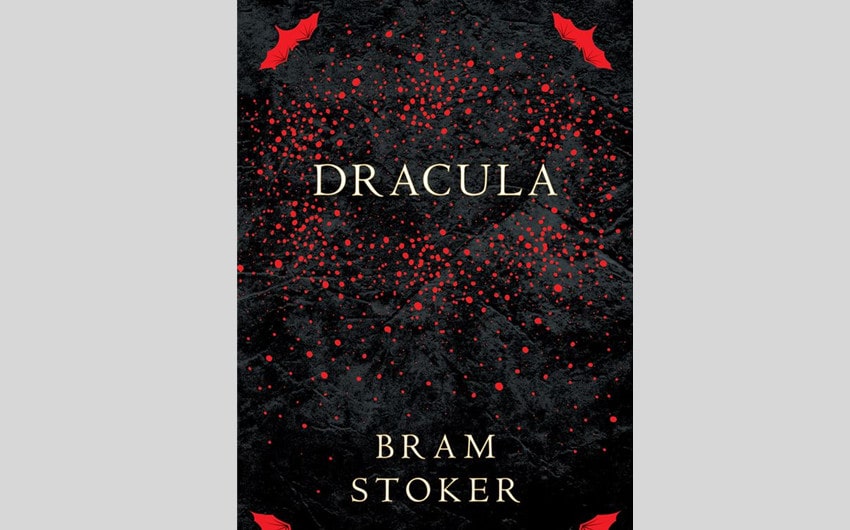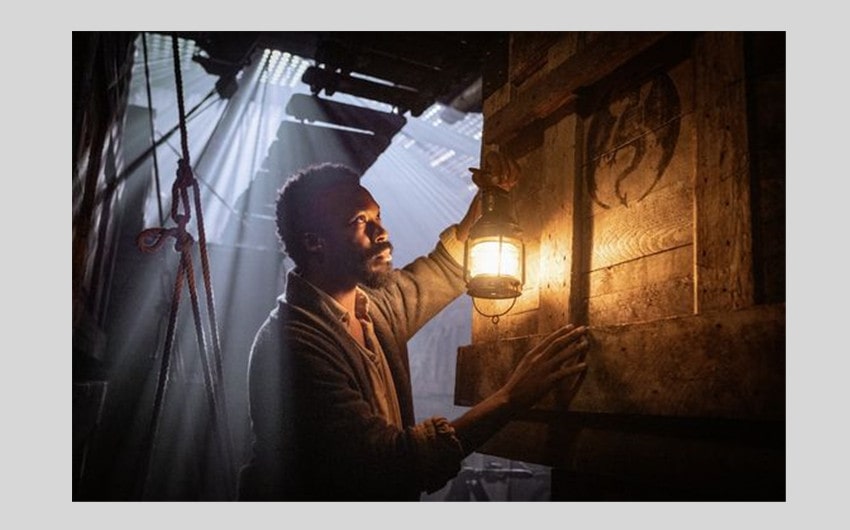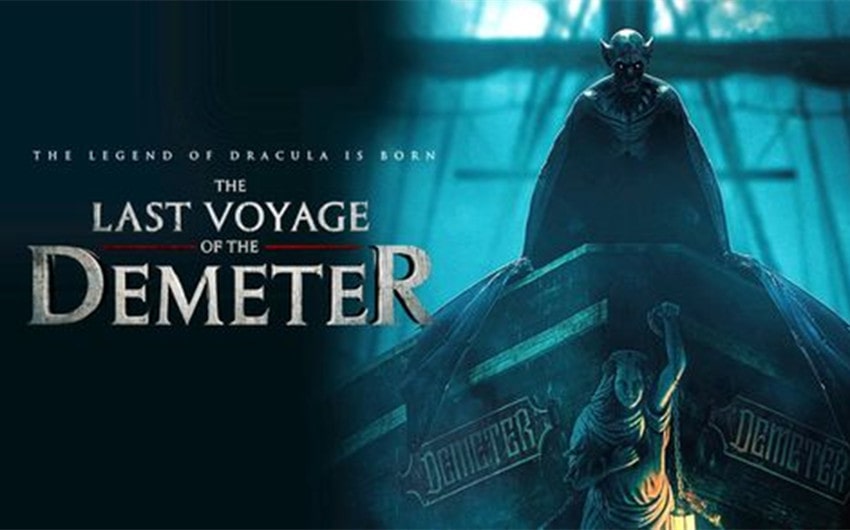The Last Voyage of the Demeter: A Haunting Tale of Survival
Imagine being trapped on a ship, far from land, with something dark and deadly lurking in the shadows. The Last Voyage of the Demeter takes this terrifying idea and brings it to life in a gripping horror film that follows a doomed crew’s journey across the sea. As fear grows and their fate becomes inevitable, the tension on board becomes unbearable.
If you’re a fan of classic monster tales or enjoy the thrill of survival horror, this story offers a chilling and immersive experience. Get ready for a high-seas nightmare that will leave you on edge.
Plot Summary

Image source: Pinterest
The Last Voyage of the Demeter tells the harrowing story of the ill-fated cargo ship, Demeter, as it sails from Romania to England in the late 19th century. Tasked with transporting a series of mysterious crates, the crew soon realizes that they’re not alone on the ship.
As the journey progresses, strange events begin to unfold: livestock are found drained of blood, crew members disappear, and a creeping sense of dread fills the air. The crew, led by their experienced captain, struggles to survive as they are slowly hunted by a supernatural predator: Dracula.
His presence is a relentless force, picking off the crew one by one, while the ship drifts further into peril. The movie builds suspense as hope fades and the remaining crew members realize they are trapped, with no means of escape from the ancient evil onboard. The journey ends in tragedy as the Demeter arrives in England, a ghost ship with no survivors, leaving behind only the Captain’s log—a grim record of the horrors that took place.
The Historical and Literary Origins

Image source: Pinterest
The film The Last Voyage of the Demeter is directly inspired by a specific chapter in Bram Stoker’s Dracula, titled “The Captain’s Log.” This chapter chronicles the mysterious and deadly voyage of the Demeter, the ship that unknowingly transported Dracula from Transylvania to England.
In Stoker’s novel, the Demeter’s arrival in England marks a pivotal moment in Dracula’s story, as it brings the vampire closer to his next victims. The historical and literary significance of this chapter lies in its portrayal of isolation, fear, and the unstoppable force that Dracula represents.
Set in the 19th century, the chapter captures the uncertainty and superstition surrounding long sea voyages during that era. Ships were often isolated from the rest of the world, with limited communication and supplies, leaving crews vulnerable to both natural and supernatural threats. Stoker’s story taps into this fear, making the Demeter’s doomed voyage a perfect vessel for Dracula’s silent and deadly journey to a new land.
By focusing on this particular chapter, The Last Voyage of the Demeter gives audiences a closer look at one of the more mysterious and suspenseful parts of the Dracula mythos. It transforms what was originally a brief, atmospheric segment of the novel into a full-scale cinematic horror story, amplifying the tension, mystery, and dread that Stoker created.
Themes and Atmosphere
The Last Voyage of the Demeter is steeped in themes of isolation, dread, and survival, all of which are magnified by the film’s confined setting aboard a ship lost at sea. One of the central themes is isolation, both physical and emotional. The crew is cut off from the outside world, with no means of communication or escape.
This sense of being trapped amplifies the horror, as the ship becomes not just a vessel but a floating prison. The vast, empty ocean surrounding the Demeter serves as a constant reminder that there’s nowhere to run, heightening the tension and fear of the unknown.
The theme of dread is pervasive throughout the movie, with a slow build-up of tension as the crew begins to realize something is hunting them. The supernatural force that stalks them, Dracula, is more terrifying because of how little they understand about it. Each new attack increases the sense of impending doom, with no clear way to fight back. The sailors’ growing paranoia and hopelessness make the atmosphere thick with unease, as they grapple with their disbelief and fear.
Survival becomes a desperate goal as Dracula picks off the crew one by one. The film explores human resilience in the face of overwhelming terror and certain death. The characters are forced to confront not only the physical threat of Dracula but also their own fears and mortality. This theme of survival is intertwined with the slow unraveling of their hope, as the crew realizes that their chances of making it through the voyage alive are slipping away.
The film’s atmosphere is a perfect blend of Gothic horror and claustrophobic tension. The fog-covered ocean, dimly lit ship interiors, and creaking timbers evoke a feeling of isolation and decay. Darkness is used as both a literal and metaphorical element, with Dracula hiding in the shadows, just as fear lurks in the minds of the crew.
The ocean itself becomes an ominous, oppressive force, its vastness serving as a reminder of their helplessness. The film uses sound—such as the eerie silence of the open sea, the distant howling winds, and the ship’s ominous creaking—to build a sense of dread. All of these elements work together to create a haunting atmosphere that draws viewers into the terrifying world of the Demeter.
Dracula’s Portrayal

Image source: Pinterest
In The Last Voyage of the Demeter, Dracula is portrayed as a menacing and primal force of nature, far removed from the more charismatic versions of the vampire seen in other adaptations. This version of Dracula emphasizes his predatory nature, focusing on his hunger for blood and his methodical, almost animalistic hunting of the crew. He is depicted as less human and more like a supernatural beast, relentless and unstoppable in his pursuit of prey.
Unlike some portrayals that emphasize Dracula’s charm or sophistication, this Dracula is a monstrous figure, barely resembling a man. His appearance is grotesque and menacing, adding to the terror he instills in the crew. His predatory instincts are on full display, as he stalks the ship’s corridors, lurking in the shadows and striking when least expected.
There’s a sense of inevitability to his attacks, as if no matter what the crew does, they cannot escape his reach. This portrayal emphasizes Dracula’s superhuman strength, speed, and cunning, making him a nearly invincible adversary who toys with his victims.
The film also explores Dracula’s vampiric abilities, showing him as a creature of darkness who thrives in the night. His ability to move unseen and strike without warning adds to his mystique as an ancient, malevolent being who has survived centuries by feeding on the living. In contrast to the more nuanced or sympathetic depictions in modern vampire stories, this Dracula is pure evil—his only motivation is to feed, and the crew is nothing more than cattle to him.
Additionally, Dracula’s isolation mirrors that of the crew. While they are trapped on the ship with him, he is also a figure doomed to eternal loneliness, constantly seeking sustenance but never able to form genuine human connections. His existence as a predator in the shadows makes him both terrifying and tragic in a sense, as he is bound by his nature to destroy all life he touches.
This Dracula is not a romanticized figure of power and nobility but a dark, ancient force that represents death itself. The movie strips away the seductive qualities often associated with the character and presents him as the embodiment of primal fear. In The Last Voyage of the Demeter, Dracula’s portrayal is a return to the root of the vampire myth—an unstoppable, terrifying creature that brings death wherever he goes.
Cinematography and Special Effects

Image source: Pinterest
The cinematography in The Last Voyage of the Demeter masterfully creates a claustrophobic and eerie atmosphere, emphasizing the ship’s isolation at sea. The use of shadow and light enhances the feeling of dread, with much of the action taking place in dimly lit spaces. Tight camera angles heighten the sense of entrapment, while wide shots of the vast ocean highlight the crew’s helplessness.
Lighting plays a crucial role, with Dracula often emerging from the darkness, his presence foreshadowed by shadows. The special effects effectively bring Dracula to life with a mix of practical effects and CGI, showcasing his grotesque form and supernatural abilities. The film also uses realistic effects to depict the violence of Dracula’s attacks, adding a visceral, unsettling layer to the horror.
Together, the cinematography and special effects create a visually compelling and immersive horror experience, drawing the audience deeper into the ship’s doomed voyage.
Critical Reception and Audience Reactions
The Last Voyage of the Demeter garnered mixed reactions from critics and audiences. Many praised the film’s Gothic atmosphere and its slow-building tension, likening it to classic horror films that rely on setting and tone to create fear. Dracula’s portrayal as a monstrous predator was also widely appreciated, offering a darker take on the iconic character.
However, some critics felt the film’s pacing was too slow, with the build-up taking too long before reaching the action-packed final act. Audience reactions reflected similar sentiments—fans of slow-burn horror admired the atmosphere and suspense, while others wished for more consistent action throughout.
Despite these critiques, the film has gained a solid following among Gothic horror fans, with its moody visuals and unique approach to the Dracula mythos standing out as key strengths.
Featured image: Pinterest.com







